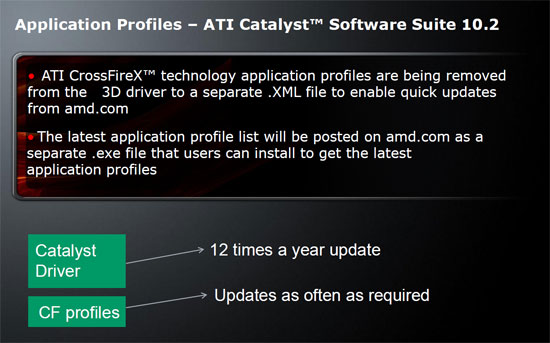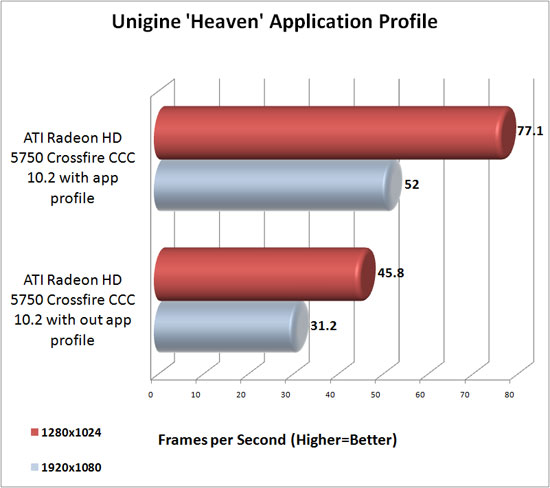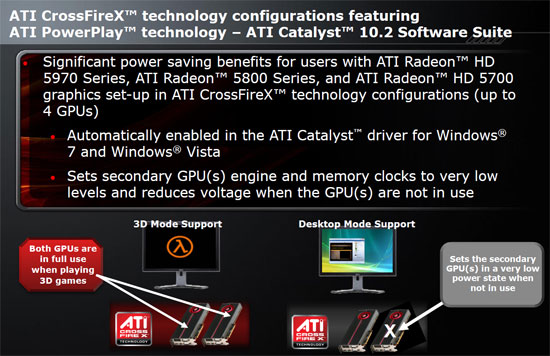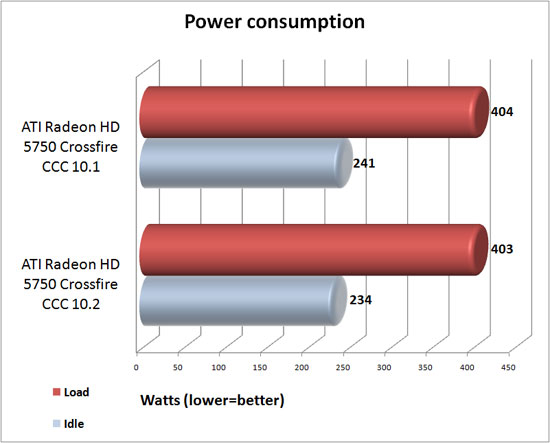ATI CATALYST 10.2 & 10.3 Driver Preview – Application Profiles
ATI CATALYST 10.2 Driver features

ATI has started to break down the drivers for the Radeon series into multiple parts. While this may seem a strange thing to do, it does offer increased capabilities. By doing this they can leave the core driver intact month to month while updating features with a much smaller download. The application profile is a stand alone executable which contains a .xml file with the latest application profiles. This allows ATI to update this quickly and easily as often as needed. What this means for the end user is best shown by example. Let’s use the Unigine “Heaven” benchmark as an example shall we. If this benchmark were to be released mid month between drivers, you would be in a bit of a bind. Either you don’t play/use it to the full potential that your CrossfireX set-up would normally allow, or you have to wait until the next driver or a hot-fix is released. With the new system of updating the application profiles it can be done much quicker and much more often. Now you may be asking yourself do these application profiles make a difference in the performance of a game. Well the easiest way for me to answer this is to show you some results.

Using the application profile for the Unigine “Heaven” benchmark provided us with significant gains. Gaining a 66.7% increase in frame rates is no small feat. Updates like this one will available much more frequently than new drivers will be.

Another of the key features of the new ATI Catalyst 10.2 PowerPlay. As I am in no doubt that you know that more power equates to more heat, and more heat equals some bad mojo. ATI has further reduced the power consumption of a CrossfireX set-up. Well at least during idle and low power usage like web browsing and word processing. What they did to achieve this, is once you exit a 3D application such as a game the second GPU essentially goes into a hibernate mode. Fire up into your next gaming session and it wakes up seamlessly. ATI tested a pair of ATI Radeon HD 5870’s and saw a reduction of 12Watts.

My own testing with a pair of ATI Radeon HD 5750’s did show a little bit different result. Using Catalyst 10.1 my total power consumption of 241 Watts, with the new Catalyst 10.2 idle consumption dropped to 234 Watts. That’s a drop of 7 Watts which is a far cry from the 12 Watts that was shown by ATI. A difference here was somewhat expected. The Radeon 5750 has roughly half the architecture of a Radeon HD 5870. Having half the architecture could definately translate to half the power savings like seen above. When I tested the power consumption of a Radeon HD 5870 here it did have a higher draw at idle. Which would mean a larger difference when you bring a second one to the Ultra Low Power state.

Comments are closed.